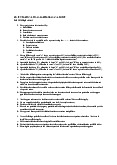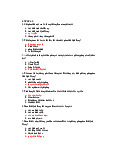



















Preview text:
Business Decision Making
Module 2: Data & Assessment Tools Week 5: Data Insights Extracting insights from data 2 RMIT Classification: Trusted Overview
• In this topic, we will explore how to extract
insights from data to aid decision-making • You will learn how to:
• extract data insights from data
• use data visualisation techniques
• create powerful reports that effectively
communicate data insights through
visualisations and inform sound business decision making RMIT Classification: Trusted Activities
By the end of this topic, you’ll be able to:
• understand what makes a good report
• apply descriptive statistics to help analyse and communicate
• enhance the communication of results by
applying visualisation of data
• demonstrate the role of infographics and
dashboards in the decision making process RMIT Classification: Trusted Extracting insights from data •
Extracting the right insights from
data is important for effective business decision-making •
In this video, we explore how to
prepare data and generate insights Preparing data
• Data downloaded from a database is often not ready for analysis
• Data preparation is the process of cleaning and
transforming a raw dataset to make it ready for analysis
• Crucial step that, if overlooked, can result in
nonsensical analysis or, worse, incorrect analysis
• Can be a time-consuming task! Data preparation methods
• Filtering: Focusing only on a subset of data from a large dataset
• Validation: Ensuring data is reported in a consistent and “expected” manner
• Shaping: Consolidation and transformation of the structure of the data
• Joining: Combination of different datasets based on a relationship
• Deletion: Deletion of data that is either a duplicate or an error
• Aggregation: Summarisation of data into descriptive statistic measures Data insights • Data insights:
• start from raw data that has been cleansed, interrogated and prepared for analysis
• refers to identifying patterns or relationships in data
that may not have previously been known
• A data analyst will use a range of quantitative and
qualitative techniques to “tell a story” from a data set
• Data insights can be used to:
• draw conclusions which are applied to a business problem
• generate powerful reports and dashboards Generating insights
Insights can be generated via several different methods including: • descriptive statistics • data visualisations
• predictive modelling (such as regression analysis) • data optimisation • outlier identification
• key performance indicator (KPI) generation
In the next video, we explore descriptive statistics as an
example of how this can be used to generate insights Leveraging descriptive statistics 10




